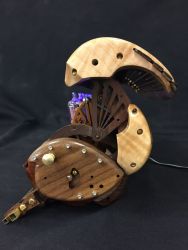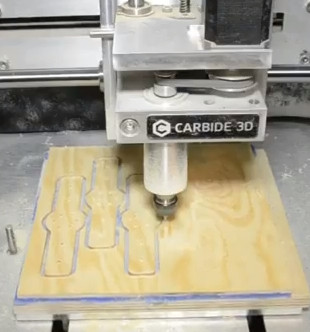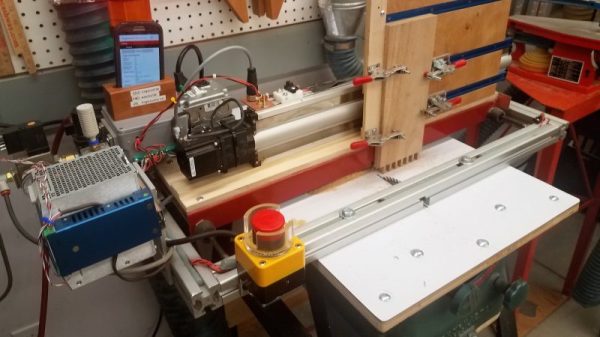Instructables user [hellboy] — a recent convert to the ways of the laser cutter — is a longtime admirer of Nixie tubes. In melding these two joys, he has been able to design and build this gorgeous work of art: The White Rabbit Nixie Clock.
Going into this build, [hellboy] was concerned over the lifespan of the tubes, and so needed to be able to turn  them off when not needed. Discarding their original idea of having the clock open with servos, [hellboy]’s clock opens by pressing down on a bar and is closed by snapping the lid shut — albeit slightly more complicated than your average timepiece. Given the intricacy of the mechanism, he had to run through numerous prototypes — testing, tweaking and scrapping parts along the way.
them off when not needed. Discarding their original idea of having the clock open with servos, [hellboy]’s clock opens by pressing down on a bar and is closed by snapping the lid shut — albeit slightly more complicated than your average timepiece. Given the intricacy of the mechanism, he had to run through numerous prototypes — testing, tweaking and scrapping parts along the way.
With the power of steam-bending, [hellboy] lovingly moulded walnut planks and a sundry list of other types of wood to define the ‘rabbit’ appearance of the mechanism, and the other parts of the clock’s case. Once again, designing the clock around a row of six pivoting Nixie tubes was no mean feat — especially, as [hellboy] points out, when twenty or so wires need to rotate with them! After a few attempts, the Nixie tubes, their 3mm blue LEDs and associated wires were properly seated.


















